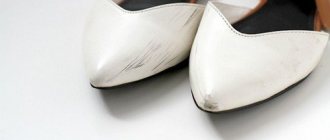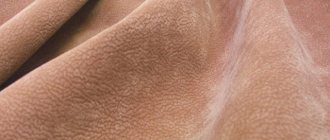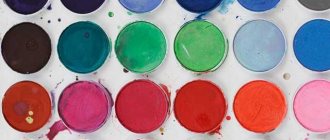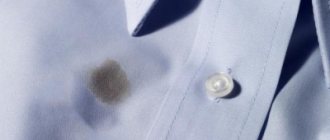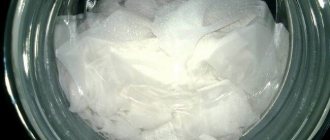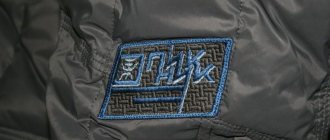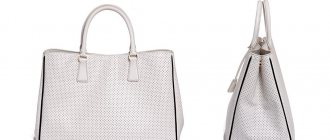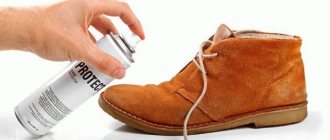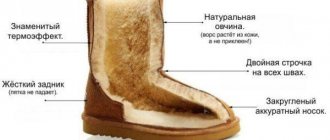Sometimes it happens that buying a new pair of shoes is more profitable than taking the old one to the workshop. But it’s even more profitable to repair your favorite boots yourself. At first glance, it seems that you can buy any glue for shoes - and that’s the trick. What turns out to be the case? And the fact that choosing shoe glue is not so simple, and making repairs correctly is even more so.
Types of shoe glue
All products are divided into several large groups. They are distributed according to the type of adhesive and purpose.
Professionals say that currently, adhesives are the best way to provide reliable and strong adhesion.
Depending on the purpose, the following varieties are distinguished:
- Attaching the base. Designed for attaching heels or soles. It is highly reliable and ensures strong fastening of all main elements.
- Auxiliary work. Used for connection using threads, nails, staples.
- Secondary sticking. For gluing labels and non-essential items. This does not require high joint strength.
Note! Before purchasing products, you should carefully study the instructions. It usually describes the purpose and application features. Different materials require different adhesives.
There are also universal substances. They can be used for gluing various materials without loss of quality characteristics. It is also important to take into account the durability of certain components, as well as susceptibility to external influences - humidity, temperature and other factors.
It’s difficult to say for sure which shoe glue is the best. This depends on the type of product and the specific task.
The glue is also divided according to its composition. They all have their own advantages and disadvantages. The following varieties are distinguished:
- Universal. A common type of adhesive that is used to perform a variety of tasks. Suitable for repairing minor damage or permanent connections of torn elements. It is characterized by high elasticity and resilience. However, it is not recommended to use it in areas of strong bends, as rapid breakdowns are possible, which will lead to serious damage.
- Combined. The composition may contain various components depending on the requirements of the manufacturers. It is recommended that you read the instructions first. Most often used for gluing small parts, nose parts, and insoles.
- Nairite. Does not have high strength indicators. Mainly used for gluing shoe insoles. Well suited for connecting rubber soles. Characterized by resistance to humidity and cold. Cannot be used for gluing polyurethane coatings, as this will only damage the surface.
- Polyurethane shoe adhesive. Professional composition of high quality. The advantage applies in workshops. When using, do not pour a large amount of adhesive, as it increases in size during drying. The product hardens in a matter of seconds, so it is recommended to be careful when working with it.
- Polyvinyl chloride. The composition contains resins. They make the composition flexible, which allows you to glue the bends. Does not have high quality indicators. If used properly, refurbished shoes can last for many years. Among the special properties is that the glue has good moisture resistance.
- Perchlorovinyl rubber. Not a strong adhesive. Used exclusively for connecting insoles. The composition is not stable when exposed to low temperatures or moisture. It is recommended to fix the details exclusively on summer shoes.
To choose the best shoe glue for home use, you need to take into account many indicators. You need to decide what you will use it for. This will help you make the right choice.
The right shoe adhesive will help extend its service life, as well as significantly save on contacting professional craftsmen.
Some methods
When repairing leather surfaces, you often have to deal with scratches, cuts, and even holes when you have to apply a patch. There are several time-tested methods that will help extend the life of your favorite item.
Patch facing out
To repair a product using the “patch out” method, a piece of a material that is suitable in color and texture is cut out, slightly larger than the hole being closed. Glue is applied to the prepared surfaces, the patch is pressed from the outside and placed under a weight until completely dry.
Gluing jacket leather with a patch from the inside
If the damage is minor, it makes sense to put a patch on the wrong side. In this case, the patch is placed under the tear, and they try to position the edges of the torn item as close to each other as possible so that the defect is invisible. The glue is used according to the instructions.
Corner break
If your sleeve catches on a nail, you can get damage in the form of a corner. This defect can be eliminated by using a patch from the inside. The torn area is glued to the underlying patch, the edges of the tear are glued together end-to-end.
Tear off a whole piece
In the case where part of the material is missing, you can restore the item in different ways: find the most similar patch, mask the defect with appliqué, or replace the entire piece of clothing. If the hem of a long leather coat has been damaged, it makes sense to completely shorten it and thus update your wardrobe.
Cut on the jacket
To make a cut on the leather surface invisible, a base is glued under the damaged area, and the edges of the defect are fastened together. It is convenient to apply the glue using a toothpick. The item is left under the load until the composition dries.
How to make your own shoe glue
If you don’t want to spoil your favorite pair of shoes with a low-quality compound, you can try making your own glue at home. This is a rather complicated process that will take time. It is also advisable to watch training materials to understand all the intricacies.
You should choose shoe glue, taking into account the composition of the material of the surfaces to be joined and the amount of work to be done.
One of the recipes for preparing an adhesive is as follows. You need to take nylon or nylon (women's hosiery is suitable for this). After this, they are sent to soak in acetic acid. It must first be cooled.
In fact, any substance containing rubber is suitable for gluing shoes. It will need to be dissolved in acid.
There is another option. It is necessary to prepare soft rubber and gasoline. The workpiece is cut into small pieces and soaked in fuel. The mixture must be left for two days. After this, the resulting mass is poured into a glass or plastic container. Stored in a dark, cool place. The finished mixture has a thick consistency that can be used for gluing shoes.
A piece of good soft rubber (raw rubber) is crushed into small pieces, which are infused for several days in clean, light so-called aviation gasoline.
In order for the composition to be of high quality, you must have sufficient experience. It is recommended to consult a specialist. If necessary, it is better to purchase ready-made glue from well-known brands.
What should I use to glue the sole?
If you do not want to ruin your shoes, it is recommended to select a special adhesive. Usually the packaging contains a corresponding mark. You can choose one of the following options:
- "Moment Marathon". The substance is intended specifically to repair broken soles. It is characterized by high resistance to humidity and other adverse weather conditions. Can be used in hot or severe frost. For some types of manufacturing materials, use is not recommended. This list is on the packaging, so please read it carefully before purchasing. Quite easy to use. You can wear the boots within 24 hours after gluing them.
- "Desmokol." Used for shoe repair. Helps against burst soles. More suitable for synthetic materials and suede. Sold only in specialized stores. Used in practice by professional workers.
- "Shoemaker" or "Nairit". The composition uses natural materials that provide high adhesive properties. Makes it possible to easily glue a broken shoe sole. Can be used for gluing the inside of boots, as well as small cracks. It is recommended to leave the work for several days to dry completely. Otherwise, rapid re-breakage is possible.
- Epoxy resin. Is a powerful adhesive. It has a high density, which is suitable for boots that are actively used every day in aggressive conditions. It will take several days for the damp surface to dry completely. After this, the shoes can be worn at your usual pace.
- Bonikol or Kenda Farben. Industrial imported products that are used in professional crafts. Suitable for problem areas, gluing heels, soles, socks, insoles. One of the best options for how to seal shoe soles at home.
How to choose the right shoe glue
When choosing an adhesive, many parameters must be taken into account. The main ones are listed below:
- Target. First you need to decide what the glue will be used for. This could be a major overhaul or gluing of individual elements. Select which materials need to be glued together (leather, suede). If you need to perform a large amount of work, it is better to give preference to expensive brands of products that have proven themselves in the market. The results will last much longer.
If you plan to use your shoes for another season, you can purchase the substance cheaper and easier so as not to overpay.
- Types of work and materials. Before purchasing any product, you must carefully read the instructions. It usually indicates the possible scope of work to be performed, as well as the materials that are allowed to be glued. Universal adhesives are not always suitable. In some cases, they only make the problem worse.
- Characteristics. The glue must be resistant to humidity and low temperature.
Repair shoes in a well-ventilated area.
- Tube size. If you are planning a small renovation at home, it is better to buy a small package. If you store the adhesive for a long time, it will dry out quickly.
- Price and quality. The main thing is to correctly assess the price-quality ratio of the product so that the purchase does not hit the budget too much.
- Efficiency. The strength of the composition is indicated by the reliability of fastening and the service life of the product. Parts should not be deformed or come unglued immediately after pasting.
Before using the adhesive, carefully read the instructions, which tell you what materials it is suitable for.
These characteristics must be taken into account when purchasing glue for gluing shoes. The modern market provides a wide range of different products.
Criterias of choice
The correct concept for choosing glue for shoes with your own hands is setting a specific task. The usual version of the product is suitable for securing inside the insole. If the sole has peeled off, it would be better to purchase a reinforced compound. A quality product cannot spoil the materials. During the repair process, shoe parts retain their appearance - their deformation is unacceptable. The seams must remain elastic, and the fixation must be of high quality and last a long time. Connections after repair with an expensive, good composition are frost-resistant, moisture-resistant, elastic, wear-resistant.
Which shoe glue to use depends on the materials being joined. Many types are suitable for rubber, leather, fabric, felt, suede, synthetics. But not everyone can attach the sole of a polyurethane boot. If the repair is planned to be done for a short period of time, then you can purchase an inexpensive product. In this case, it is recommended to use epoxy glue. For long-term wear, it's worth investing in a more expensive option. Preference should be given to well-known brands. For what purposes this or that shoe glue is used can be understood by studying the instruction manual or reading the information on the packaging.
The choice depends on the materials to be joined. Preference should be given to well-known brands
The Best All-Purpose Shoe Adhesives
Often the composition of all adhesives is the same. However, the quality of each product is different. Below are the most common options that a home craftsman should always have on hand.
KENDA FARBEN SAR 30E
It has universal properties. Can adhere to a variety of materials. Suitable for repairing shoes made of natural or artificial leather, rubber, textiles. Characterized by fast gluing of different surfaces. The seam is durable, resistant to high humidity and low temperatures. It will take two days for the adhesive to dry. After this, you can use your shoes.
Universal adhesive for shoe and leather goods production.
Among the advantages are:
- use in professional workshops and at home;
- high efficiency and quality indicators;
- resistance to temperature changes;
- There is no unpleasant aroma when gluing.
Flaws:
- The cost of one tube is quite high.
Moment "Marathon"
Quickly glues different surfaces, so it is suitable for quickly gluing shoes. It is easy to use. The composition does not spread, as it has a gel structure. Not intended for gluing polyethylene or PVC. It is used for gluing fabric, wood, rubber and other materials from which shoes are made. Possible freezing. After this, it heats up quite quickly at room temperature without losing its quality characteristics. The packaging looks red.
Moment Marathon is a special shoe glue, perfect for repairing any types of shoes made of various materials in any combination.
Pros:
- There are different tube sizes;
- allows you to quickly repair the required product;
- economically distributed over the work surface;
- It is characterized by high strength and efficiency.
Minuses:
- unpleasant smell when gluing.
Nairit
Designed to work with a wide variety of materials. It is distinguished by high quality gluing of rubber, fabric, leather, wood. It has elasticity, so it does not break the seam. There are two ways to treat the surface. With cold pasting, it will take a day for the adhesive to dry; with hot pasting, it will take about four hours. In order to give the mixture the required viscosity, you can use additional components (gasoline, acetone).
Nairite glue is widely used in shoe workshops.
Advantages:
- contains no harmful toluene-based solvents;
- is distinguished by reliability and durability;
- used to perform various household tasks.
Flaws:
- high price.
Glue "317"
Household universal glue. They can be used to glue a variety of materials: leather, rubber, glass, synthetic substances. For example, it is used to create landscaping decorations. Available in 40 ml tubes. Among the features is that it hardens quickly.
Adhesive “317” is a quick-setting polychloroprene, universal adhesive based on neoprene or polychloroprene rubber.
Advantages:
- creates a strong connection;
- no need to wait a day for gluing;
- has a dense consistency;
- affordable price.
Flaws:
- leaves yellow marks.
Review of popular brands
There is a wide variety of adhesive compositions on the market used for temporary fastening of materials.
"2M Scotch Weld"
The product comes in an aerosol form that can be used to attach a variety of materials, including fabric and plastic. This adhesive is suitable for fixing labels and is used in silk-screen printing. Once applied, the spray does not harden over time.
"Marabu-Fix It"
An aerosol of this brand is used for fastening:
- plastic;
- paper;
- cardboard;
- wood;
- glass
This spray is capable of fixing these materials to the fabric. The adhesive composition does not leave stains and is washed off with cold water.
"Prim"
Like the previous one, this aerosol is used when working with fabrics. The glue holds the material securely and is washed off with water.
"Idea Decoupage"
Italian high-quality composition, with which you can repeatedly glue cardboard, fabric and polyethylene to each other. “Idea Decoupage”, thanks to these properties, is widely used in design.
"KK"
The KK brand produces a transparent adhesive composition used when working with small decorative parts and non-woven fabrics. This product is also used to secure elastic materials and knitted items.
"UHU Tac Parafix PROPower"
This brand of glue is produced in the form of pads, which, after kneading, can hold a weight of up to three kilograms. Unlike other similar products, this composition tolerates contact with water well and does not change properties when exposed to direct sunlight. Therefore, glue is used, among other things, for finishing external surfaces.
"Repositionable"
Aerosol adhesive, available in 150 ml containers, is suitable for temporary bonding, including thin materials. The components included in the glue do not penetrate deep into paper or fabric and do not deform the latter. This product can also be used to join foam and polyethylene.
"Takter"
An aerosol of this brand is widely used in needlework, cutting, sewing or screen printing. The product does not harm any type of fabric, providing reliable fixation of materials.
"Spirit 5 Strong"
The word “Strong” in the name indicates that the adhesive composition also provides a reliable connection. But, despite this, this product is suitable for fastening, including thin materials: cardboard, paper, cellophane and others. "Spirit 5 Strong" is most effective when creating collages and applications. The product is also used for sewing.
"Krylon Easy-Tack"
Aerosol adhesive does not contain acids and does not penetrate deeply into the structure of the material. Thanks to this, thin fabric or paper is not deformed after processing.
How to repair shoes without glue
In this case, you can flash your shoes. It is not recommended to perform this procedure yourself. It's better to consult a specialist. Otherwise, you risk ruining your favorite pair of shoes.
The ability to operate a shoe awl is not given to everyone, but it allows you to repair shoes yourself, without turning to a shoemaker.
Choosing glue for repairing shoes at home is a rather difficult process. There are many parameters to consider. When gluing, you should strictly follow the instructions.
Required materials and tools
The quality of shoes does not always meet established requirements, which often leads to product failure at the most inopportune moment. Therefore, even before the shoe platform begins to peel off, or visible damage appears on it, you should stock up on everything necessary for repairs. A novice shoemaker will need:
- cutting tool with a thin sharp blade;
- sandpaper;
- universal shoe glue;
- degreasing composition;
- clean rags;
- glue brush with stiff bristles;
- old newspapers;
- putty knife;
- porous rubber.
Knife and sandpaper
KENDA Farben SAR 30E – suitable for minor repairs
Nairite glue from an Italian manufacturer allows you to glue the rubber sole to almost any upper - regardless of the material. But it does best with minor repairs.
Another area of application for Nairit is the manufacture of custom-made shoes: for covering heels, gluing insoles, placing blanks on lasts and other assembly work.
Pros:
- Does not allow water to pass through;
- Does not harden or crack in the cold, always maintaining good elasticity;
- You can do without thermal activation, but it is precisely this that provides the strongest adhesion;
- It evaporates more slowly compared to nairites from other manufacturers, which gives time to correct flaws;
- If something goes wrong, the frozen composition can be reheated and re-glued.
Cons:q
- “Not friendly” with PU soles;
- It takes a long time to dry.
